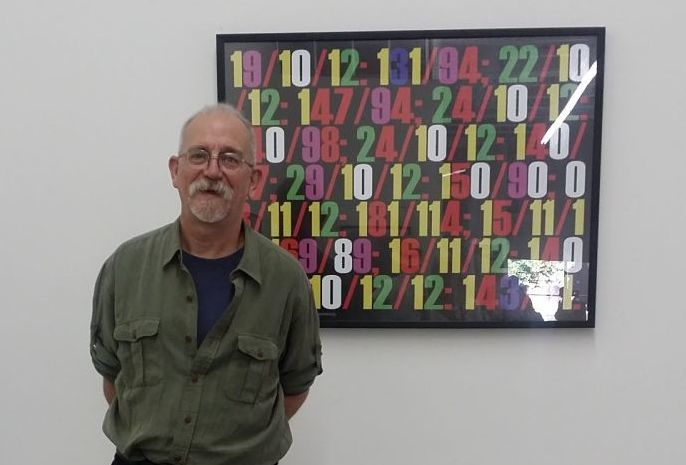“The openness and the unpredictability are our gallery’s vital signs. We have embraced from the beginning the outsider within”. This statement from the exhibition’s press release rings true upon entering Robert Kananaj Gallery (RKG). Situated in a large warehouse-like building on St Helens Avenue, near Lansdowne station, RKG welcomes visitors for their fourth year anniversary.
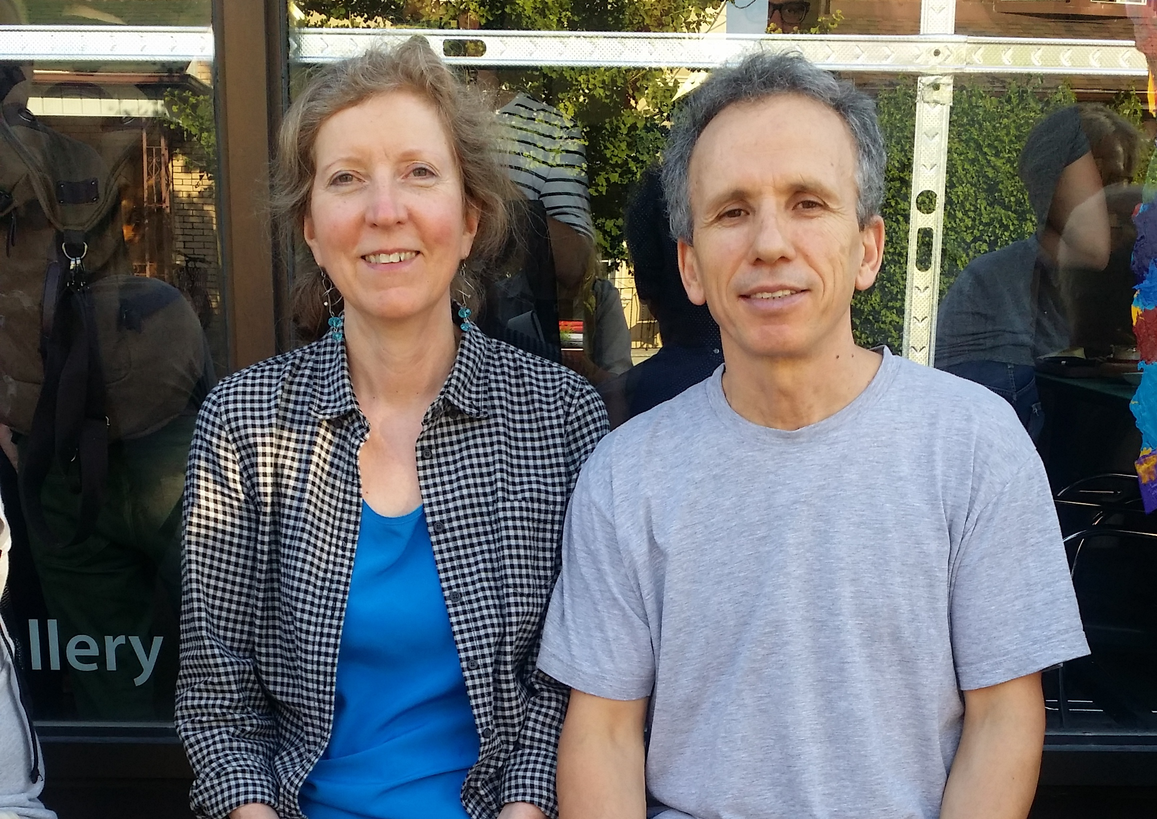 RKG co-directors Roberta and Robert Kananaj
RKG co-directors Roberta and Robert Kananaj
The show features Ibrahim Abusitta, Silvia Argiolas, Bruce Eves, Michael Davey, Oscar Figueroa, and Lula Motra among others; as well as Jacob Hughes in a month-long residency, where he completed a spectacular 100 x 20 foot mural re-imagining of Vittorio Carpaccio’s 1502 painting of “St. George and the Dragon” on the side of the building, on top of Istvan Kantor’s mural (“Everything is Under Control”). Artists will continue to build upon previous murals as time passes.
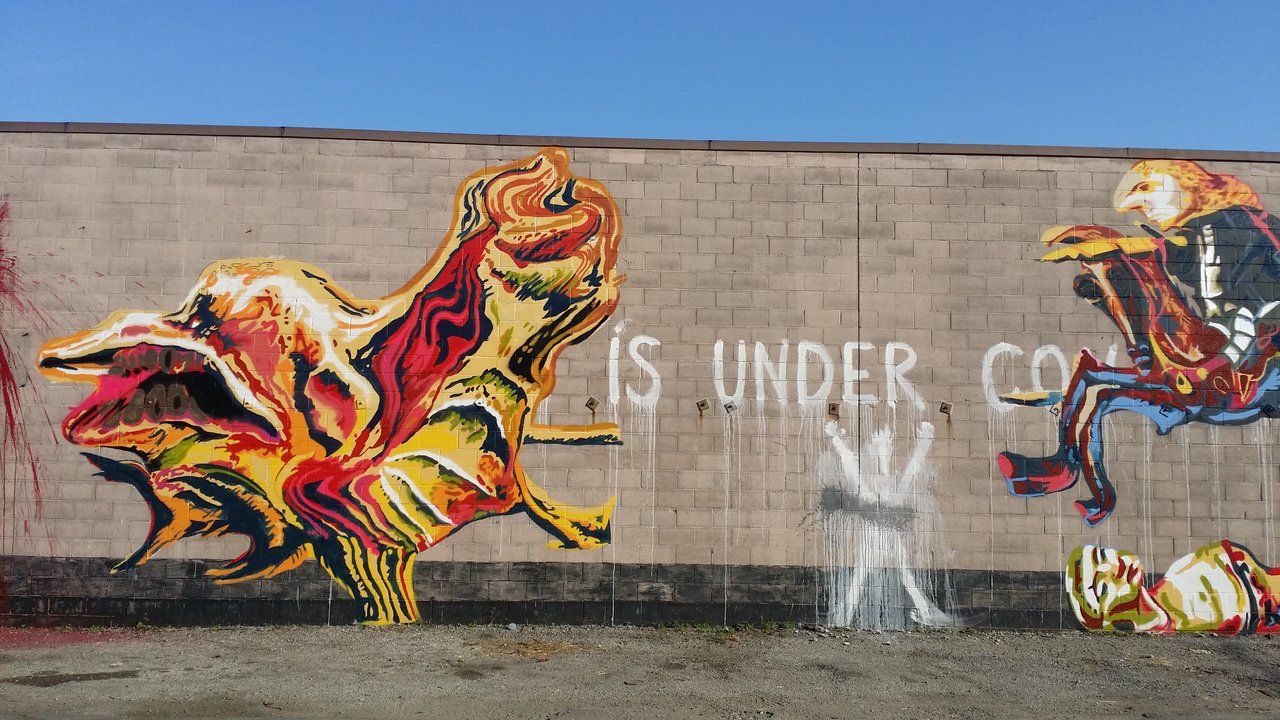 Jacob Hughes, St. George and the Dragon
Jacob Hughes, St. George and the Dragon
The gallery is one of those places that overwhelms and confuses you when you enter. It’s hard to differentiate what is a piece for the show and what is just a chair and a table. Between the information table and the hors d’oeuvres is a piece of camera equipment, sitting on a table ever-so-inconspicuously. Until someone told me it was part of the exhibition, I was passing by it with no thought other than to get to the cheese board. There is also a long black piece of cloth running along the wall and the floor that I am still not sure if it’s part of Motra’s installation or just part of the gallery’s decoration.
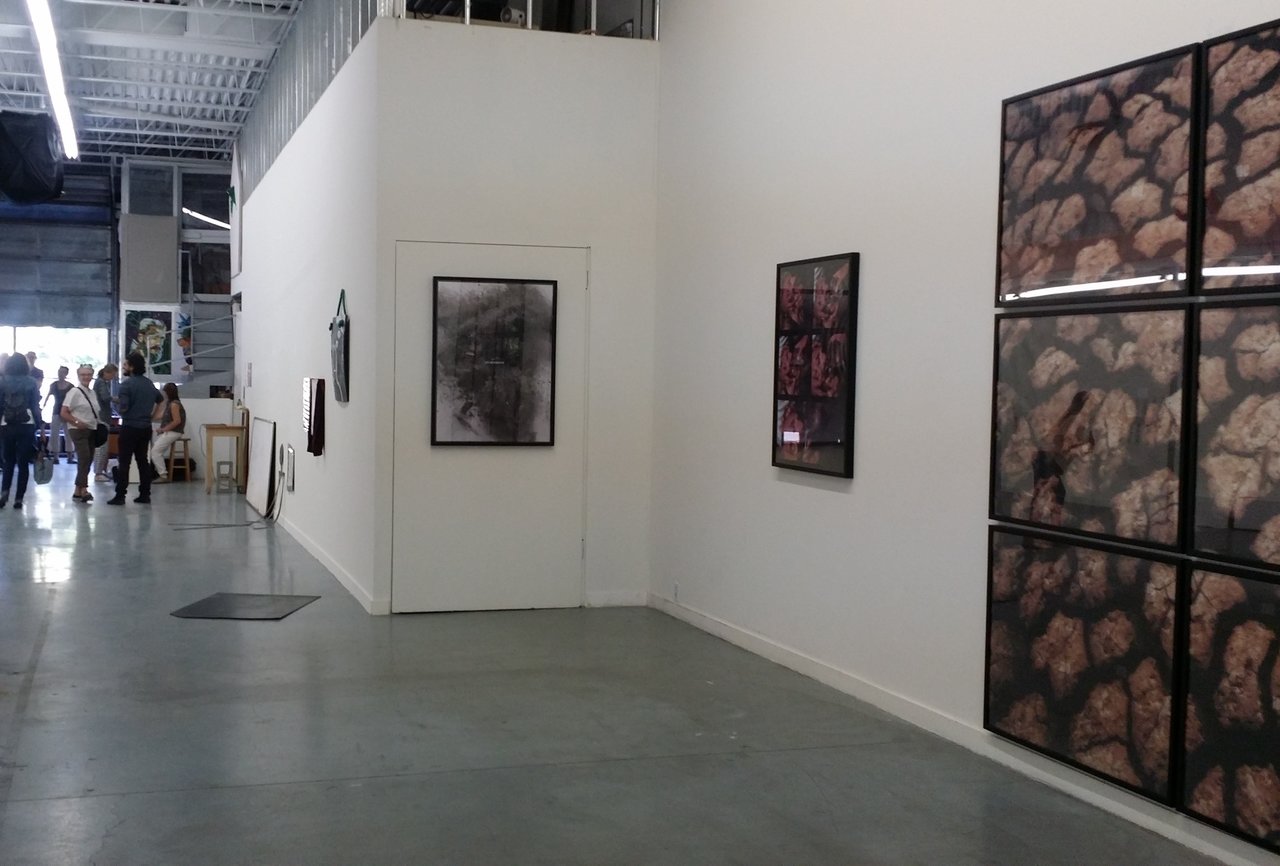 Installation view with Bruce Eves’ work on the right side
Installation view with Bruce Eves’ work on the right side
Once you walk deeper into the gallery it becomes easier to differentiate. Every artist seem to have their own little nook that they took over: Davey on the right, Abusitta on the left, and Eves and Motra in the back. Davey presents a sculpture collection called “Mammalian/Reptilian”. While each piece is not specifically titled, there’s a similarity among them. There is violence, hybrid creatures, and organic movements. One piece is of a masked man, sitting on another man, sitting inside a mouth of a fish, all enveloped in an odd sinewy, blood vessel-like tubes. While the rider has three pairs of arms all grabbing at the vessels that attack and cover his face, the bottom one has no arms, and is simply blindfolded. The positioning of the sculptures is interesting, as they contain so much detail that can be missed if one is not squatting down on the floor, spinning around the pieces.
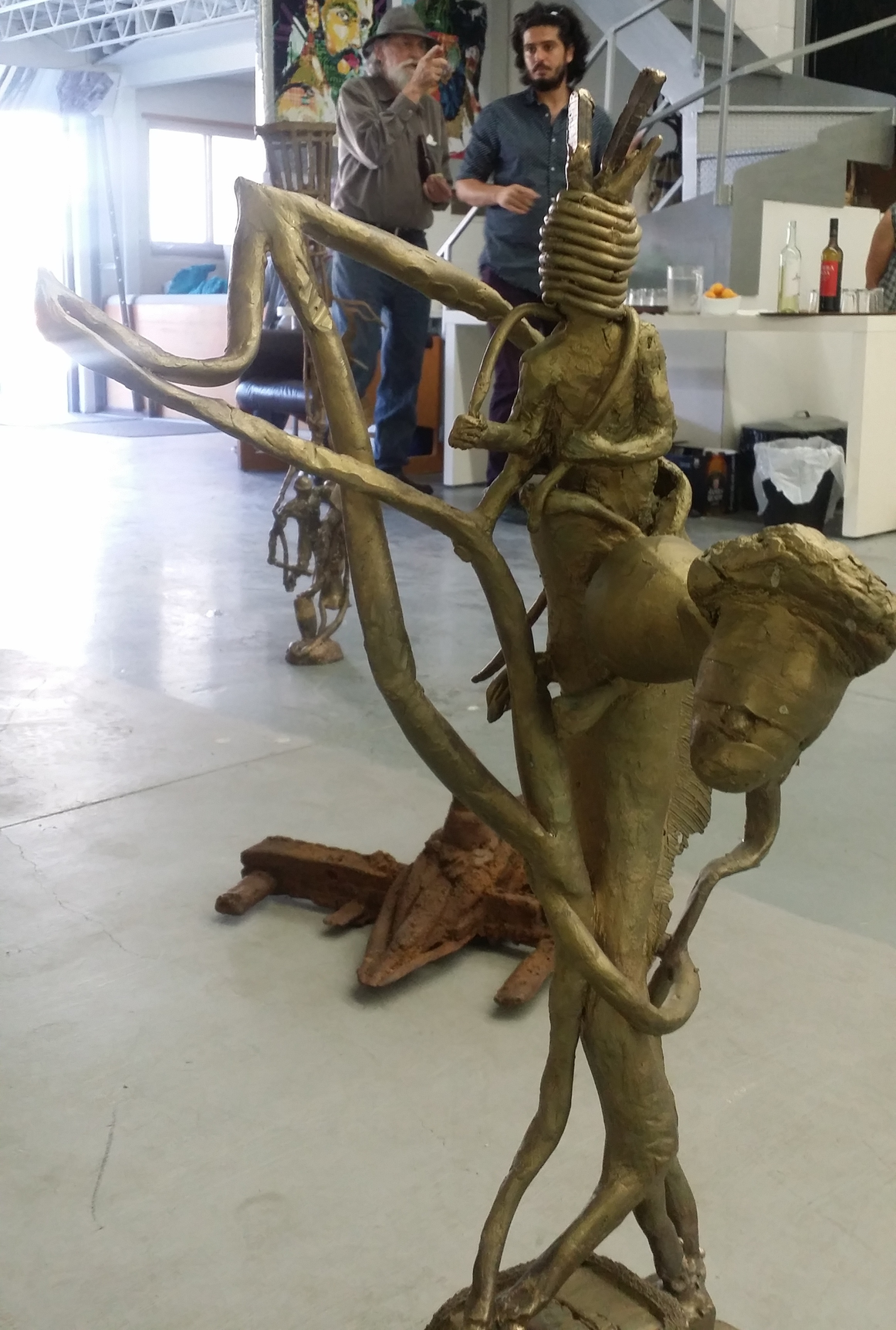 Michael Davey, Mammalian/Reptilian
Michael Davey, Mammalian/Reptilian
One great thing about this exhibition is that every artist is drastically different from one another. Near Davey is Abusitta’s multi-media work, “Formal Informal Dialogue”, which is an exhibition in itself. It looks like an artist’s work station. There is a table with a tablet on it, a little shelf with knick knacks, and a bunch of small pieces of art works hung on the wall. As Abusitta said, “Many of the objects were created in studio with no intent other than to create something. It is only after being informed of an upcoming exhibition that the objects found their purpose.” In a rather refreshing manner, Abusitta presents a piece of his everyday artistic life in which the everyday work environment has naturally adapted into an art work. The cinder block under the table perhaps best captures its essence: the word ‘flexible’ is written on the front, and the same word is written backwards in the back. It can become anything it wants or needs it to be.
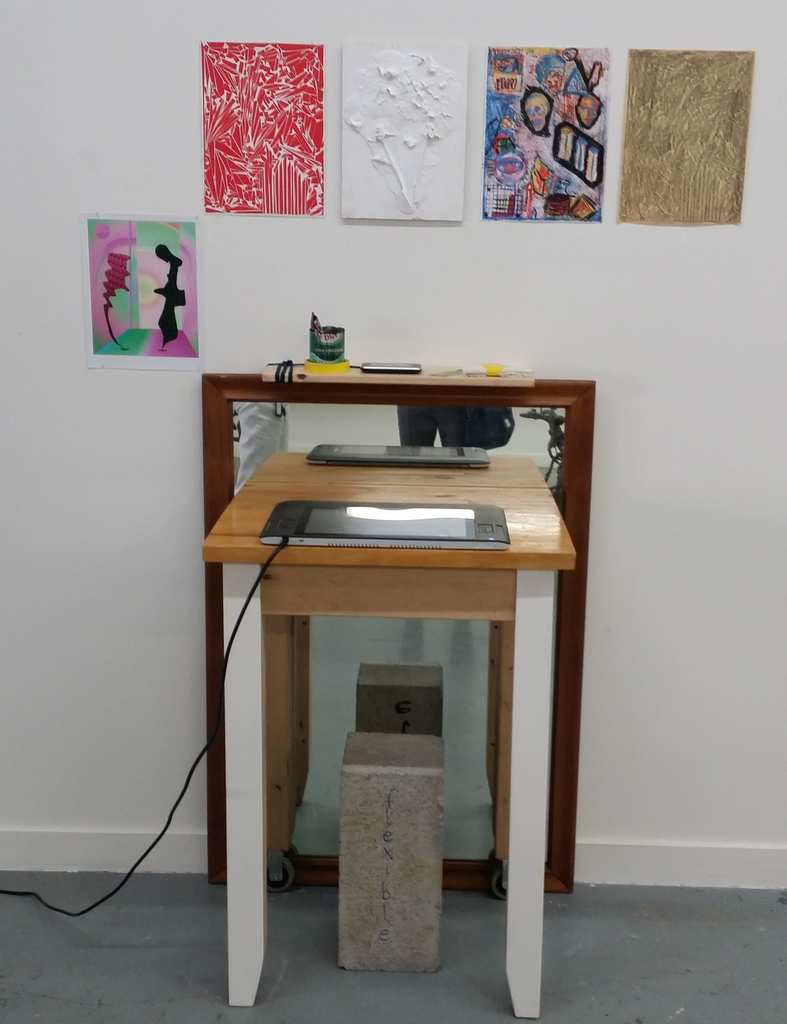 Ibrahim Abusitta, Formal Informal Dialogue
Ibrahim Abusitta, Formal Informal Dialogue
Similarly, most works presented by Eves are quite personal, but perhaps the most personal is his recent self-portrait. Three years ago his blood pressure was dangerously high, to a point where he was in risk of a heart attack. Nine of his blood pressure readings over the course of two months are presented in a colorful manner. Although the colors of the numbers are random, Eves’s highest and arguably most dangerous reading happens to contain only yellow and red numbers, as if there was an intuitive sense of alarm. The initially innocuous set of numbers sheds light on Eves’s former health, while he walks around the gallery, now in perfect health.
During the whole visit, no matter where you walk around in the gallery, there is a face that follows you. A masked and disfigured face, full of attitude. This diva stands in a small painting in a corner by the staircase, and constantly makes you walk back to have a ‘conversation’ with her. While the painting is untitled, it is part of Argiolas’ series “Buttane Triste”, which translates to “Sad Bitches”. She wears a fancy bikini, standing in front of a burst of what seems like nightclub lights. However, it’s not so much sadness, as it is disdain and dismissal. It is the kind of dismissal that makes you want approval. So I keep coming back, and she keeps on ‘rejecting’.
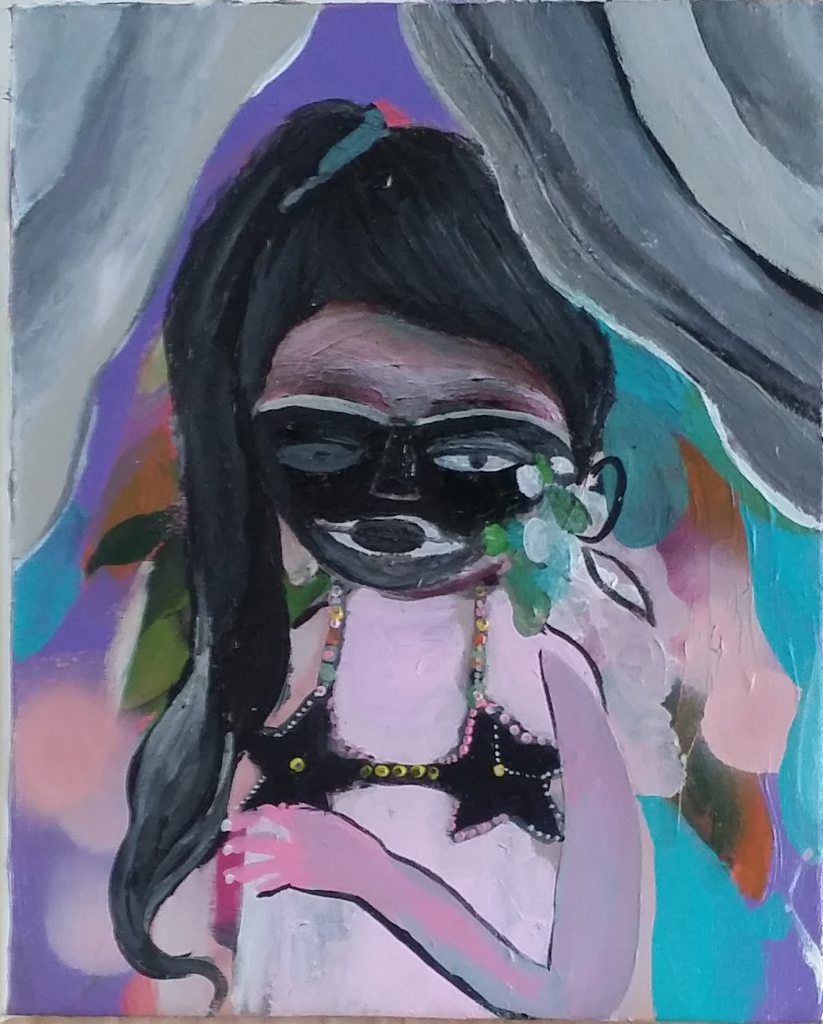 From Silvia Argiolas’ series Buttane Triste (Sad Bitches)
From Silvia Argiolas’ series Buttane Triste (Sad Bitches)
There is so much more to see in this exhibition than what is mentioned above. You could spend some time here away from the heat of the summer and if you need a break relax on the new bench in front of the gallery.
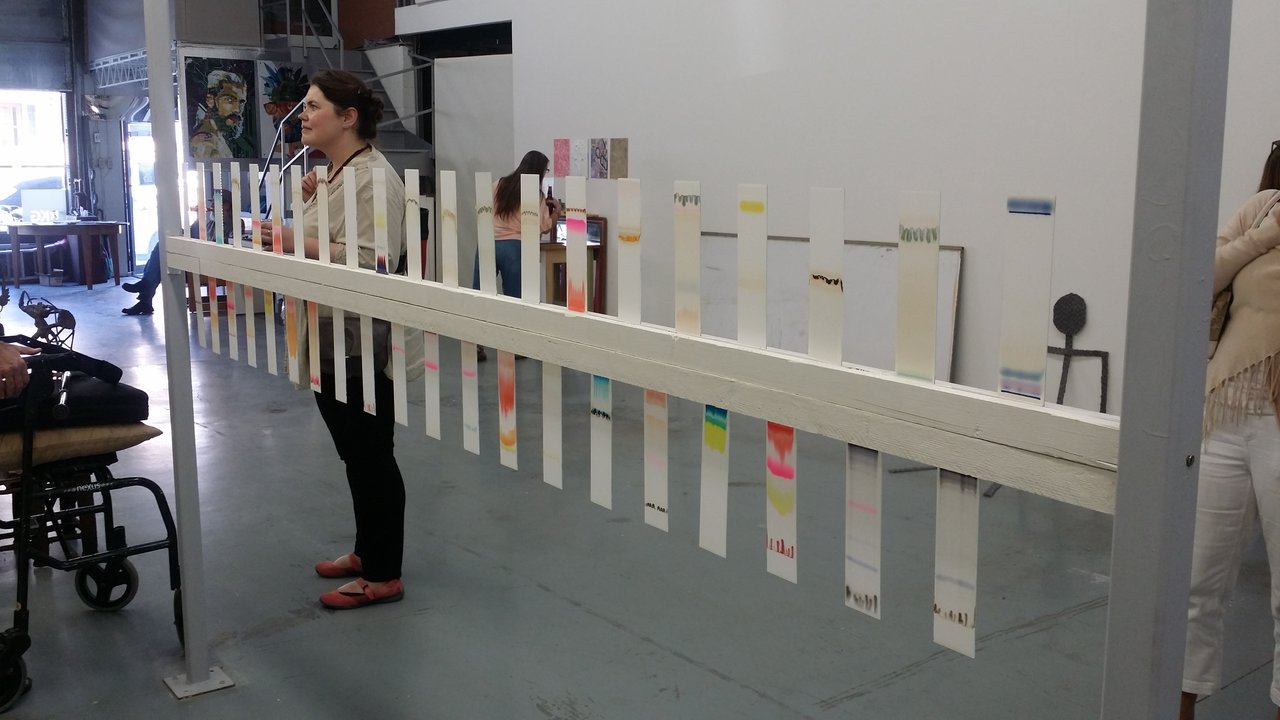 Guest with Nicole Clouson’s installation
Guest with Nicole Clouson’s installation
Text and photo: Sunny Kim
*Exhibition information: July 16 – August 29, 2015, Robert Kananaj Gallery, 172 St Helens Avenue, Toronto. Gallery hours: Tue – Sat 11 a.m. – 6 p.m.

